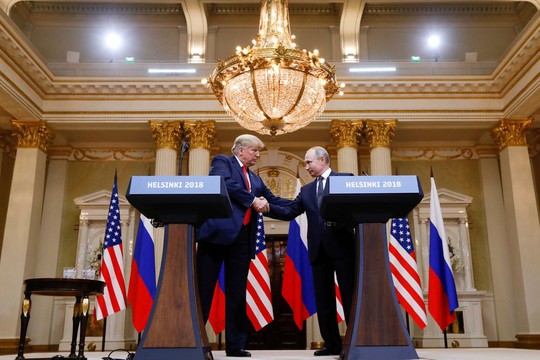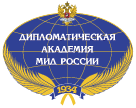Putin and Trump at the Helsinki summit, 2018.
Photo: Reuters
Imagine the scene at Moscow’s annual Victory Day parade one year from now. As the strains of the “Preobrazhensky March” echo across Red Square, a detachment of U.S. Marines enter the parade, their polished boots reflecting the early May sunshine. At the center of the rostrum atop Lenin’s mausoleum, Russian President Vladimir Putin turns and embraces the American guest of honor standing next to him. U.S. President Donald Trump is beaming: Finally, a proper parade and a proper welcome from a proper leader, writes ‘Foreign Policy’.
The dream of a U.S.-Russian rapprochement is never far from Trump’s thoughts. He has repeatedly praised the Russian leader as a “genius,” “smart,” and “savvy.” Those friendly words are echoed in Moscow, where Putin has called Trump “brave” and “hounded from all sides” by the U.S. “deep state” during his first term.
Trump’s fondness for Putin may reflect admiration of the Russian leader’s strongman style. Putin has — at least in some eyes — made Russia great again, taking over a disintegrating, traumatized, marginalized country in 1999, took all the levers of power, and turning it into a formidable force in world politics.
But the attraction also stems from self-interest. One shared irritation is NATO. Trump makes no secret of the fact that he regards the U.S. military presence in Europe as outdated and costly. Europeans are rich. They should pay for their own defense. He also shows notable disdain for NATO’s Article 5 collective defense clause, which could drag the United States into a nuclear conflict with Russia. Putin dislikes NATO, too. The U.S. presence emboldens the countries he likes least—Poland and the Baltic states — to pursue what he sees as confrontational policies. Russia would prefer neutral buffer states on its borders.
Trump does not need to withdraw the United States from NATO. He just needs to let it wither. He can send no further aid to Ukraine, and he can stop sending U.S. troops to stiffen NATO’s presence in Poland and the Baltic states. He can decide not to replace U.S. Army Gen. Christopher Cavoli, the Supreme Allied Commander Europe, when he steps down this summer. He can furl the nuclear umbrella with a simple public statement that it will be used only in the event of a nuclear attack on the U.S. homeland. The United States, he could easily say, has no intention of being dragged into war over a “border skirmish” in Europe.
That would leave Britain and France as the only nuclear powers in Europe. But London’s nuclear deterrent relies on cooperation with Washington for the servicing of the Trident missiles that carry the warheads. If Britain tries to lead Europe after a U.S. withdrawal, Trump can play hardball, with devastating effects on British nuclear, conventional, and intelligence capabilities.
If he really wants to do Putin a favor, he can also make it clear that there are caveats on the use of the advanced weapons that the United States has already sold to European allies. Without U.S.-made warplanes (F-35s), long-range fires (HIMARS and the air-launched JASSM), and Washington’s provision of heavy lift services, high-tech surveillance, and other so-called enablers, they lack the defensive capability to deter Russian aggression. This would leave European countries wide open to Russian subversion, sabotage, and mischief.
It is worth remembering that the United States has a record of intervention in European politics. It used money and intelligence assets during the Cold War to foil Soviet-backed communist parties and peace movements in countries such as France, Germany, and Italy. That could happen again, with the new targets being so-called woke identity politics and government restrictions on free speech. That was the theme of U.S. Vice President J.D. Vance’s excoriating attack on the European political establishment at the Munich Security Conference in February, as well as his recent protest at the German domestic security service’s designation of the far-right Alternative for Germany (AfD) as extremist. Before Trump and Vance, the main foreign backer of the AfD and other far-right parties across Europe was Russia.
With U.S. and Russian support for these political forces, it is easy to see a transformation of European politics, with the AfD and its counterparts elsewhere riding high and even winning elections. That would destroy Europe’s political cohesion and rule-setting power, something that would suit both Washington and Moscow.
At U.S.-Russian talks in Riyadh in March, the two delegations showed surprisingly little interest in the ostensible subject of negotiation, Ukraine. They talked much more enthusiastically about their shared dislike of the European Union, according to someone familiar with the talks.
U.S. energy companies prospered greatly in Russia until the sanctions imposed after the war in Ukraine forced them to pull out. Under the slogan sverli, detka, sverli (Russian for “drill, baby, drill”), U.S. oil majors and oilfield services companies could quickly restart the business they abandoned. The Kremlin used Russian courts to punish them for withdrawing. With the political wind blowing in the other direction, the same judges could be used to pave their return. Fast-moving consumer goods companies would also be quick to return to the Russian market: McDonald’s, Coca-Cola, and Procter & Gamble all made money serving Russia’s 140 million consumers. With Putin’s blessing, buying U.S. goods would be a sign of loyalty, not treason.
Putin can also do business with Trump. It is easy to imagine an invitation to erect a Trump Tower in Moscow — perhaps on land gifted by Putin himself — to exemplify the new era. The Trump property empire has in the past benefited from Russian investments, and there could be more.
Could it happen? The EU will not surrender without a fight. Its rule-setting power makes it one of the most powerful political entities in the world. The way it exercises those rules may cost outsiders a lot of money, but the rules are highly popular in Europe.
Perhaps most importantly, all attempted U.S.-Russian resets since the 1990s have ended in failure, with varying degrees of damage to U.S. allies before reality dawned. It is not clear why a Trump-Putin version should be any different.
In the end, Trump’s unfathomable personality holds the key to his future relations with Putin. A full-scale love-in with the strongman in the Kremlin may be unlikely. But for erstwhile U.S. allies in Europe, the fact that it is even conceivable is alarming.
read more in our Telegram-channel https://t.me/The_International_Affairs

 11:30 14.05.2025 •
11:30 14.05.2025 •























